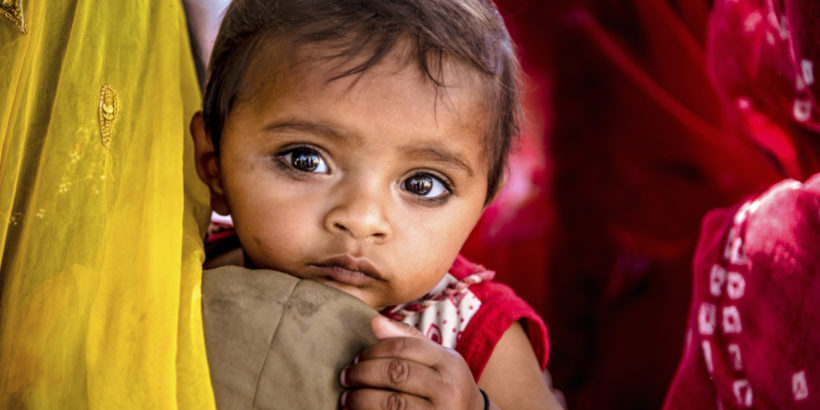In early 2018, more than 41,000 children were successfully vaccinated in the Typhoid Vaccine Acceleration Consortium (TyVAC)-Bangladesh, typhoid vaccine trial. This cluster-randomized controlled trial (RCT) implemented by the International Centre for Diarrhoeal Disease Research, Bangladesh (icddr,b) as part of the TyVAC project, is the largest population-based trial of a new WHO pre-qualified typhoid conjugate vaccine (Vi-TCV). This vaccine has the potential to save thousands of lives worldwide, and the trial will generate further evidence of the effectiveness of the vaccine in Bangladesh where typhoid affects thousands of people each year. icddr,b will follow the vaccinated children, and the overall community, during a two year period to measure the impact of the vaccine on typhoid incidence.
Beginning such a large study and vaccinating so many children takes patience and planning. Activities began when icddr,b conducted a census of the planned catchment area (the local towns and communities) for the study. Using GIS mapping, the catchment area was mapped to identify all the eligible children living in the area. We identified 61,662 children between the ages of 9 months and 15 years, giving us a large enough population to move ahead with the study. During the census, local health workers explained the upcoming trial to parents and caregivers of eligible participants. Right from the start, we focused on building a strong relationship with the families and communities to ensure trust, and strengthen trial enrolment and vaccine uptake. We also maintained ongoing partnership with local government and health officials, community groups, schools, and health centres to ensure everyone was informed about the trial.
Once we identified the communities in which we would work and began to inform families about the vaccine, training of our study team began. More than 300 staff members were trained in just eight days. The training included topics on research (blinding, quality, ethics and consent); clinical practice (conducting blood draws on children, managing potential reactions or side effects; safety monitoring); and data entry on the mobile devices. Our well-trained staff members continue to play an instrumental role in making sure that the trial runs smoothly.
After months of intense effort, our result is the extremely high quality delivery of a complicated cluster RCT implemented in 25 vaccination sites. Vaccination continued throughout rain and storms during the Norwester season in Bangladesh. During vaccine delivery, both staff and participants were blinded to ensure that the trial results will be unbiased. Real-time monitoring and quality checks were performed throughout the vaccination period, to identify and correct any potential errors, and ensure a safe and effective delivery.
The surveillance activities that began long before the study launched will continue for all participants, as well as communities in the catchment area, to identify typhoid symptoms. Several cases of typhoid have already been confirmed, which we anticipated given the rainy season in Bangladesh. We are continuing to engage with the community to capture and treat all suspected typhoid cases.
Even after vaccinating more than 41,000 children, a lot of our work continues. Passive surveillance activities are ongoing in the three study neighbourhoods in over 200,000 people to identify how well the vaccine works. The study team is focused on planning, training, and delivering the next census update, and following-up with all vaccinated participants. We are also planning a mass re-vaccination campaign to capture all children who have moved into the area and those who are now old enough to participate. These activities will require diligent planning and focused implementation to maintain the high standards already in place.
This vaccine trial will approximate a real world setting where a typhoid vaccine is used within a community. The results of this trial will be able to replicate the true reduction in disease that you might expect from the routine introduction of this vaccine. We are hopeful that the results of this trial will provide further evidence for the impact of this vaccine on children, but also the role of vaccines to reduce typhoid incidence in the community. We hope the results of this study will further reinforce to decision-makers, in countries with high typhoid burden, that TCVs are a strategic and effective way to prevent and control typhoid in their country.
Photo Credit: Sabin Vaccine Institute



